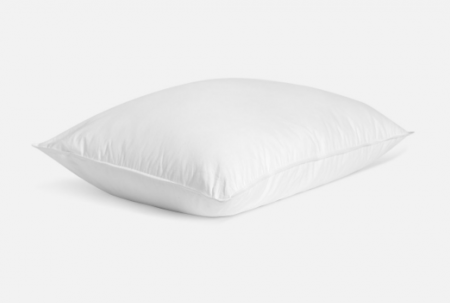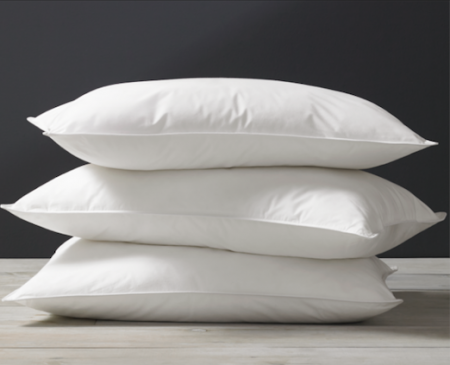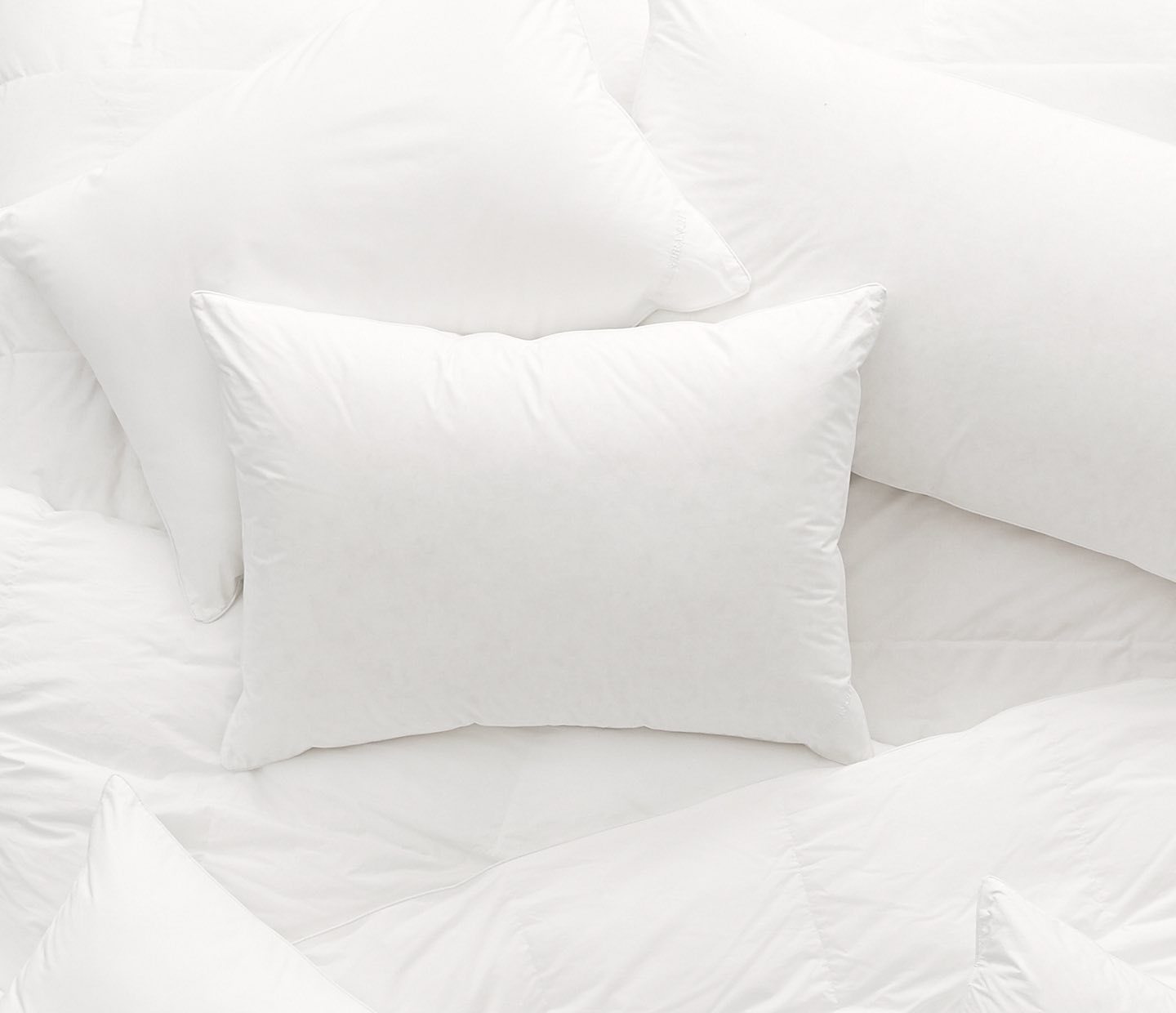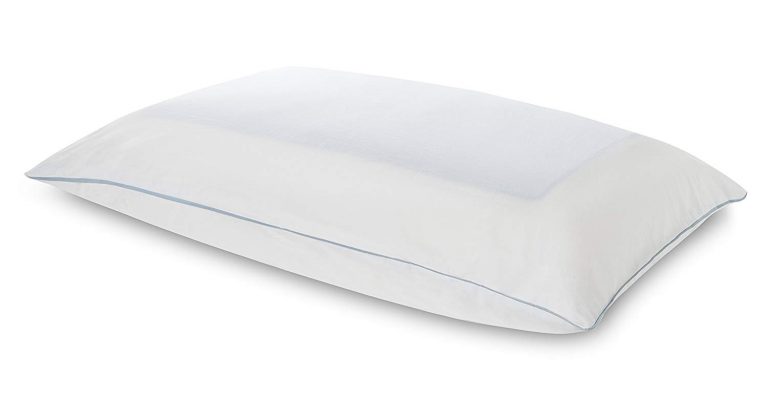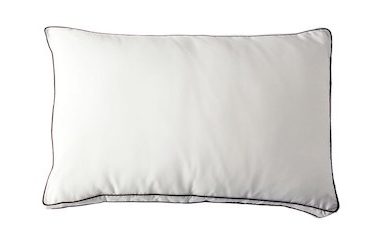|
|
|
|
|
|
|
|
| Fill Material |
Buckwheat |
Down |
Down Alternative |
Feather |
Latex |
Memory Foam |
Natural/Organic |
| Fill Description |
Pillows are filled with hulls, the hard outer casings of buckwheat kernels. The hulls create an exceptionally firm feel with moderate conforming. |
Pillows are filled with down, the soft inner plumage of ducks and geese. The fill may also consist of feathers from these birds, which are longer and firmer for added structural support. Down pillows are very soft and prone to sinking beneath the sleeper's head and neck. |
Pillows are filled with polyester puffballs that mimic the lightness and softness of authentic down. However, down alternative pillows are usually much cheaper and will not trigger down allergy symptoms. |
Pillows are primarily filled with the feathers of geese or ducks, and may contain some supplemental down for extra softness. Feather pillows feel firmer and more supportive than down pillows, but are still fairly soft compared to other pillow types. |
Pillows are filled with latex, a material derived from the sap of rubber tree plants. The fill may consist of a single piece or be shredded. Latex is very durable and supportive, though it also conforms to a fair extent. |
Pillows are filled with viscoelastic polyurethane foam, or memory foam, a synthetic material that becomes softer when exposed to body heat. This allows is to conform closely, and then retain its original shape when cooled. Memory foam fill may also be shredded or consist of a single piece. |
Pillows are completely filled with natural and/or organic fibers and materials, such as natural/organic cotton, sustainably-sourced down, organically grown buckwheat, natural/organic latex. No petrochemical agents or modifiers are used.
|
| Typical Cover Materials |
With rare exception, most buckwheat pillows are encased in organic cotton covers. Organic cotton is soft, breathable, and fairly durable. |
Down pillows typically come with cotton or organic cotton covers. Some may be encased in a cooling synthetic fabric like rayon from bamboo, which overall temperature neutrality. |
Because most down alternative pillows have below-average price-points, they come encased in polyester or standard cotton. |
Like down pillows, feather pillows are often encased in cotton. Some lower-end models may have polyester covers. |
Pillows with natural or organic latex fill often have complementary organic cotton covers. Standard cotton is also commonly used. |
The most common cover materials for memory foam pillows include standard cotton, organic cotton, and rayon from bamboo. |
As a rule, natural and organic pillows must have covers made from fibers found in nature. These include cotton/organic cotton, silk, and linen. Please note: rayon from bamboo is considered a synthetic fiber, and is neither natural nor organic. |
| Adjustability |
Buckwheat pillows are adjustable by design. Owners can add or remove hulls at will, thanks to zippered covers. |
Down pillows are usually not adjustable because the covers are sealed to prevent fill from escaping. However, some may be structured with layered components that allow owners to adjust the loft and/or firmness by adding or removing layers. |
Down alternative pillows are rarely adjustable because the fill can easily escape. Chambered designs may be customized for loft and firmness. |
Like down pillows, feather pillows are not commonly adjustable because allowing owners to open the cover could cause fill to escape. Owners may be able to order supplemental feathers from the manufacturer, but this is also somewhat rare. |
Many shredded latex pillows can be adjusted by adding or removing fill. Chambered pillows can also have components added or removed to customize the feel and thickness. |
Shredded memory foam pillows with adjustable loft are fairly common. Adjustable single-piece memory foam pillows are rarer, but some chambered designs are available. |
Adjustability varies by material. |
| Durability and Shape Retention |
Buckwheat pillows are exceptionally durable. The hulls maintain a firm, supportive feel for several years, and many manufacturers sell additional hulls in bulk for those who need a replenishment. |
Down pillows are fairly durable. As they age, the down plumage tends to become softer, which is beneficial for those who prefer closely conforming pillows. However, frequent fluffing is often needed to maintain a full shape. |
Down alternative is somewhat durable, though the material will usually begin to lose shape and become lumpy after a few years of use. |
Feather pillows are about as durable as down pillows. They too become softer with age, though the feathers provide structural support to prevent the pillow from losing too much shape – though regular fluffing is still needed. |
Latex is one of the most durable pillow materials available. Single-piece latex pillows are not prone to indentations like memory foam, resulting in strong shape retention. Shredded latex pillows tend to be most durable. |
Some memory foam pillows can be very durable, particularly those made from high-density foams. However, many single-piece models begin to sag and lose shape over time. Shredded foam pillows are less problematic in this regard. Some single-piece memory foam pillows do not have a cover. |
The pillows are usually very durable, owing to the natural longevity of their components. Some shaking and fluffing may be needed, depending on the material. |
| Temperature Neutrality |
Buckwheat pillows are a good choice for hot sleepers. The hulls have small gaps that allow air to pass throughout the interior, which helps cool off the surface. Breathable cover materials also help maintain a comfortable temperature. |
Down is an insulating material for birds, and it may trap heat for some. However, most sleepers find down pillows provide a comfortable temperature with minimal heat buildup. |
Most down alternative pillows have shredded fill, allowing air to circulate freely to cool off the surface. However, pillows with synthetic, less breathable covers may sleep warmer than those with covers made of materials like organic cotton or rayon from bamboo. |
Feather pillows sleep cool for most. Even when compacted, the feather pillow allows air to circulate. |
Latex can be a heat trap for some, but most latex pillows have either ventilated single-piece or shredded fill – both of which promote strong circulation. Latex pillows with organic cotton covers usually offer the best temperature neutrality. |
Single-piece memory foam pillows are notorious heat traps. A breathable cover can offset this issue to some degree, but hot sleepers may want to consider a shredded memory foam pillow instead. |
With rare exception, natural and organic pillows maintain a consistently comfortable temperature and sleep cool throughout the night. This is due to the natural breathability of the cover and full materials. |
| Cleaning Costs |
Buckwheat pillows are very inexpensive in terms of cleaning. The covers are almost always machine washable and the hulls never need to be laundered. |
Down pillows usually need to be dry-cleaned, which can drive up regular maintenance costs. Spot cleaning may suffice in some cases, but the down should never be exposed to large amounts of water. |
Many down alternative pillows can be washed and dried in any standard machine. Those that aren't machine washable often come with covers that can be laundered. |
Some feather pillows can be machine-washed and dried. However, laundering may cause the pillows to break down over time. Dry cleaning is recommended for most. |
Latex pillows should never be washed or dried in machines. Spot cleaning – which can be a time-consuming process – is recommended for most models. Dry cleaning may also suffice. |
One-piece memory foam pillows should be spot-cleaned only. However, many shredded memory foam pillows are fully or mostly machine washable. |
Most natural/organic pillows need to be dry-cleaned or spot-cleaned. Machine-washing can deteriorate the components and shorten the lifespan. |
| Average Price Range |
$50 to $75 |
$70 to $100 |
$20 to $30 |
$25 to $50 |
$40 to $60 |
$50 to $60 |
$150+ |
|
|
|
|
|
|
|
|
